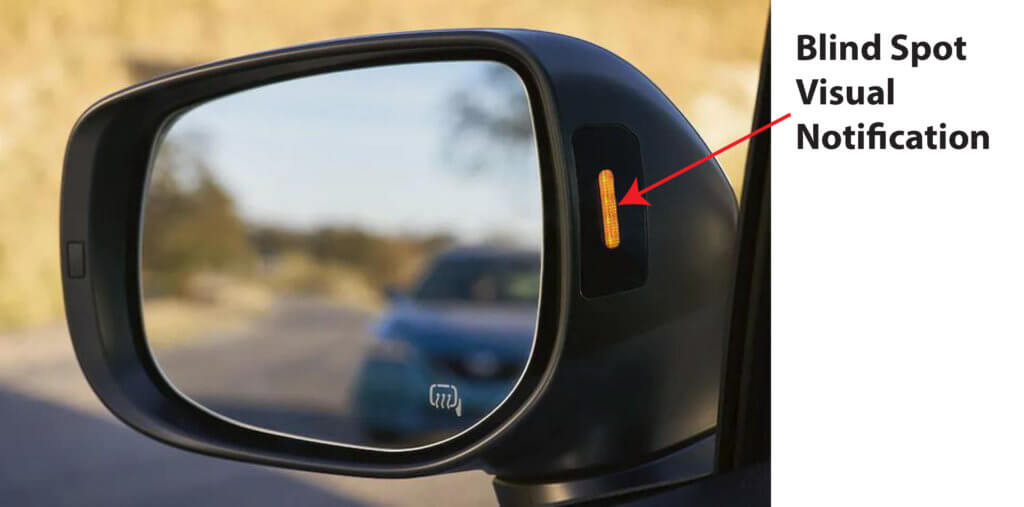Blind Spot Warning 101: What You Need to Know
Blind Spot Warning: How it Works to Avoid Accidents
Blind spot warning (BSW) is the new term industry term to replace the older term blind spot monitoring. A blind spot warning system detects vehicles in the blind spot of the vehicle while driving. It notifies you of the presence of another vehicle in the blind spot by illuminating a light on the side rearview mirror.

If the driver activates the turn signal or lane change feature, the system may also produce and audible warning.
How blind spot warning works
Blind spot warning (BSW) systems use a combination of cameras, radar, or ultrasonic sensors mounted outside your vehicle. They detect vehicles that are next to or behind your car. The system provide a visual warning, usually on the side view mirror or the front “A” pillar. When drivers activate the turn signal, some BSW systems give an audible and/or tactile (shaking steering wheel, for example) alert to indicate that it’s unsafe to merge or change lanes.
Blind spot warning systems are available in two versions
• A visual signal that lights up when another vehicle enters the blind spots and an audible signal if the driver activates the lane change to turn signal.
• Blind Spot Warning with Automatic Emergency Steering (BSW w/AES)
If the system detects a vehicle in the blind spot area and the turn signal is activated, the system automatically steers and/or brakes if the driver still proceeds to change lanes into the other vehicle.
How far the sensors see
The range of the sensors vary by carmaker. Hyundai’s version, called Lane Change Assist, detects vehicles 3 to 5 car lengths back while also monitoring the speed of those vehicles. It uses the information to predict when the vehicle will be in your blind spot before they’re actually there.
Honda’s system spots vehicles 13 feet behind your car and 10.5 feet to either side. Their system starts checking for traffic once your exceed 6-mph.
Learn how effective blind spot warning systems are from the Insurance Institute for Highway Safety (IIHS)
Where are the sensors located?
If the vehicle uses radar sensors or cameras, they’re usually located under or in the rear bumper or or side view mirrors.
How to care for the sensors
• Sensor operation will be diminished if they’re covered in snow or ice, so keep them clean.
• Exercise extra caution when driving in severe weather because heavy snow, rain, and fog can reduce the range and accuracy of the system.
• If you’re planning on doing any body work or painting, make sure you don’t paint over the sensors. Mask them off with tape first.
• Pay attention to the placement of bike racks and bike placement, because those can block or distort the sensor data.
©, 2921 Rick Muscoplat
Posted on by Rick Muscoplat